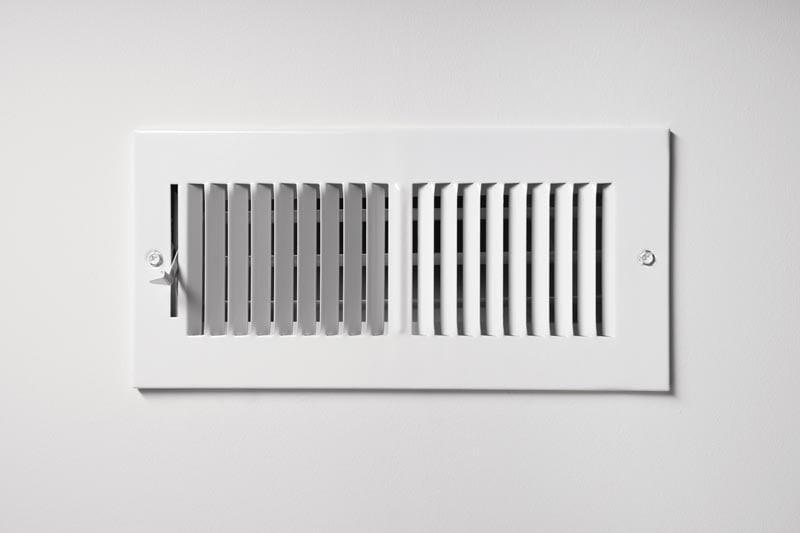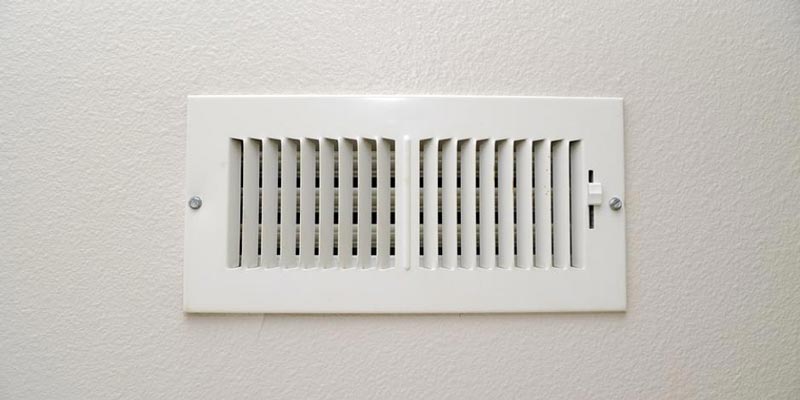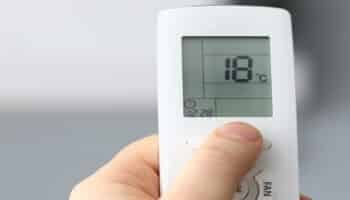We've independently reviewed this article to make sure it's as accurate as we can make it.
To find out more about our article creation and review process, check out our editorial guidelines.
Your HVAC system has vents in every room of the house. But which way should they all be facing? Find out which direction is the right one in this very article.
Here’s which way all your HVAC vents should face:
| Type of Vent | Position |
| Air vent | Pointing upward |
| Ceiling vent | Pointing toward the rest of the room |
| Return air vent (if you have multiple) | Open up the lower registers and close the top registers in the winter. Close the lower registers and open the top in the summer. |
So these are the ideal positions for your HVAC air vents. Are you ready to start adjusting yours? Then take a look at the extended guide coming up next in this article.
How You Should Position Your HVAC Air Vents
We all want to get the balance just right in our homes so we can feel comfortable. We want an atmosphere that is cool in the summer and warm and cozy in the winter. How you position your HVAC air vents will contribute to your comfort.
So how should you position your air vents? Should they be pointing down, up, or completely closed? Coming up next, we’ll talk about 3 types of air vents and the positions they should be in for the ideal temperatures.
Air Vents
Some people think that closing the vents in the rooms that they are not using (such as guest rooms) will help them save money. But that is simply not the case. HVAC systems are designed and installed with your home’s square footage in mind. So, your system will work hard to heat and cool every square foot of your home evenly no matter if the vents in one room are closed.
With that in mind, you should always leave the air vents in your home open. That way, you will avoid overworking your HVAC system which could result if you close some of the vents in a room.
Although the vents should be open, they shouldn’t be in just any old position. The vents need to be pointing in the right direction in order for you to get the benefit from the cool air in the summer. The vents should point upward to encourage good airflow. Why is this the best position for your vents? Here are a couple of reasons:
- Warm air rises and cool air sinks. Pointing your vents upwards keeps the air flowing in the room and prevents cool air from staying at the bottom of the room.
- Pointing the vents upwards promotes good airflow. The position keeps the warm air moving and stops the room from feeling stuffy and stagnant.
- You will save on heating and cooling. The upward position of your vents will help cool air to distribute better. This will help a room to cool faster and stop the HVAC system from working too hard.
- You will feel more comfortable. With the air vents facing downward, cool air will be blowing directly onto you. This could make you feel rather uncomfortably cold in the summer rather than refreshed and cool. Pointing the vents upward makes for a more pleasant ambiance.

Ceiling Vents
Ceiling vents are also a key part of your HVAC system. Your ceiling vents allow air to pass through the rooms in your house from your HVAC system. You will usually be able to find these vents around the edges of a room where they are less visible.
Since ceiling vents are normally located toward the edge of a room, you should point them toward the center of the room. Pointing them towards the center of the room will help it to stay cool in the summer and warm in the winter. Here are a couple of reasons why this is the best position for a ceiling vent:
- A standard ceiling vent has three sets of louvers that push the air in different directions in the room. The louvers in the middle of the room need to be pointing toward the center of the room for it to work efficiently.
- Ceiling vents are normally located around the outskirts of a room. So, if you do not position the vents towards the center of the room, the air will be directed towards the walls. This will stop the room from heating and cooling properly.

Return Air Vents
Please note that this section is only relevant if you have a system which has both high and low return registers. Otherwise, there’s not much adjustment that can be made if you only have one set of register – as it needs to stay open regardless.
You won’t feel any air coming from a return vent as they suck the air out of a room rather than pushing air into it. They take the air from a room and send it back to your HVAC system. This helps to decrease the room’s air pressure ready for more air to enter through the supply air vents.
Does your home often feel too chilly in the winter and too warm in the summer even when your HVAC system is operating? Then a quick adjustment to your return air vent position may help to fix this problem.
How you position your return air vents in the winter is different from how you should position them in the summer.
So, what is all this seasonal opening and closing of vents all about? Take a look at the reasons why these are the best positions for your return vent:
- Cold air is heavy. Leaving the top registers closed in winter will help more of the warm air to stay in the room. It will encourage the cooler air to leave the room and travel back to the HVAC system.
- Warm air rises. Opening the top registers in the summer will encourage the warm air to leave the room and travel back to the HVAC system. More of the cooler air will remain in the room.
- Return vents do not push hot or cold air into a room but they do pull the air from the room. Controlling which type of air gets sucked out of a room will help you to manage the temperature better.

How to Get More Airflow Into a Room
Is the air in one room of the home often stuffy? This is usually because of a lack of proper airflow in the room. Here are a couple of things you can do to remedy this problem:
- Open up the doors and windows. This will allow lots of fresh air to circulate in the room.
- Turn on a fan. Fans such as ceiling fans are great at getting the air moving again in a stuffy room.
- Change your air vent filters. A stuffy room could be a sign that your HVAC vent filters need changing.
- Increase the number of air vents. Adding more air vents to the room will increase the channels that the air can run through.
- See an HVAC specialist. Stagnant air in rooms could be a sign that your HVAC system is not working as it should.

Conclusion
Your HVAC system has many vents that all need to be pointing in the right direction. This will help you to keep your home cooler in the summer and warmer in the winter. I am sure that this article has helped you to know which way your vents should face in order to keep the airflow comfortable.
If this article has helped you, please consider supporting us by checking out some more of our free guides or signing up for our e-mail list.
Thanks for reading, and have a great day!
Cheers,
Craig







